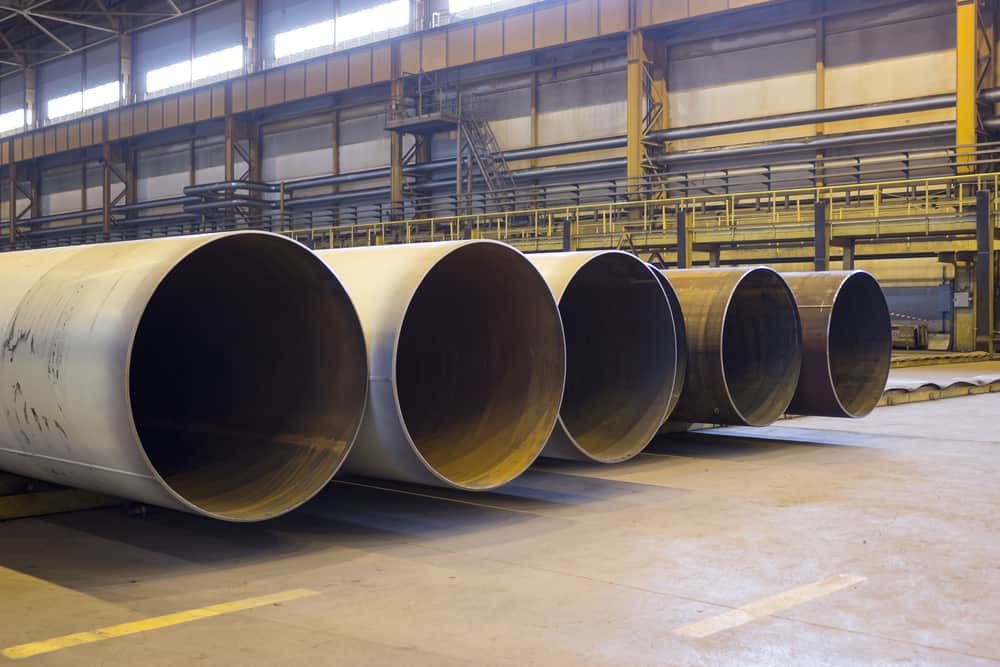
Welding pipes with large diameters poses two key challenges to welders—the thickness of the metal and the awkwardness of positioning. For consistent and quality welds, welders need to consider both the oscillation of the electrode and the travel speed to ensure seamless movement of the weld head. In automated welding systems such as the orbital welding system, the steady pre-programmed travel speed of track welders and the firm relative position for electrode oscillation significantly improves the movement of the entire weld head. The optimized control over the weld, and its improved quality and consistency, have led technicians to use track welders on various types and grades of carbon steel, stainless steel, and other alloys across industries.
Key Applications of Track Welders
A persistent challenge when welding thick metal plates is maintaining consistency while making multiple passes to fill in the entire depth of the material with a weld. Automated track-mounted welding heads, or track welders, can move along the track and reliably perform high-quality welds. Advanced and automated orbital weld heads mounted on tracks significantly improve weld consistency while offering increased speed, precision, and control. This is why technicians increasingly prefer track welders across a range of applications.
Pipe Welding
For large-bore pipe welding, welders crawl inside the pipes and often become fatigued due to awkward body positioning. As a result, their safety and the quality of the weld are both threatened. Large bore pipes with increased pipe wall thickness can complicate the welding process by requiring multiple passes around the circumference. For industries such as oil and gas with critical pipeline systems, the complexity of welding pipe circumferences demands ideal weld head positioning. Any error in the weld head position can cause poor bonding in the joint, cracking, and porosity, compromising the quality and reliability of the weld.
Heavy-duty track welders can accommodate wide passes during circumferential welding of such large bore pipes while offering a precise and controlled weld along each pass. Orbital weld heads mounted on tracks can complete the entire pipe circumference without stopping or restarting, reducing the time to complete each pass. The remote monitoring system also minimizes the risk of human error and significantly improves the quality and strength of the weld.
Thick Plate Welding
Metals with a thickness of 3 mm or more are too thick to weld with a single pass. Welding boilers, rotor shafts for steam turbines, pressure vessels, ship hulls, oil storage containers, and other heavy machinery structures is particularly challenging due to the metal thickness (12.5 mm or more). To reduce the metal thickness at the root of the weld, the metal pieces are beveled at an angle between 60 and 75 degrees that is filled in with metal during subsequent welding passes. This process, known as V-groove welding, is the standard method for welding big bore pipes and fusing other thick metal plates during fabrication.
However, performing V-groove on thick metal plates creates a large gap that requires additional filler material and more time. Track welders can address the challenges of thick plate welding. Instead of angled bevels on either side of the joint, a J-shaped groove is machined at each face of the metal workpieces. The narrow gap welding created by this process is easier to close in a short time with less filler material. The computer-controlled welding electrode attached to an orbital weld head can rotate along the workpiece to yield consistent and precise high-quality welds.
The precision, quality, and efficiency of orbital welding are undisputed. Manufacturers implement track welders for hydraulic and aviation tubing in aerospace projects and process piping and pressure vessels in biopharmaceutical, petroleum, semiconductor, food processing, and other industries. However, the high-specification projects in these industries demand reliability, versatility, and quality achievable only through the orbital Gas Tungsten Arc Welding (GTAW) welding process.
Choosing GTAW for Track Welders
Orbital GTAW allows technicians from wide-ranging industries to utilize weld heads on tracks not just for pipe welding but for welding thick plates in the flat position. Weld controller parameters, including the travel speed of track welders, arc voltage, weld current, and the feed rate of filler material, allows operators to streamline the welding process without the need for manual intervention.
Automated orbital GTAW also addresses industry-specific concerns regarding cleanliness and strength. AMI’s Model 15 large diameter weld head for GTAW welding is widely used in shipbuilding, petrochemical, and construction industries to ensure exceptional weld quality. With a computer-controlled GTAW power supply, such as the Model 415 WDR, technicians can overcome the most demanding welding challenges and ensure that orbital GTAW provides the best choice for producing high-quality welds.
Arc Machines, Inc., an industry leader in GTAW orbital welding systems, understands the demands of high-quality welds and the challenges of using track welders in various industrial projects. To learn more about our products, contact sales@arcmachines.com. For service inquiries, contact service@arcmachines.com. Arc Machines welcomes the opportunity to discuss your specific needs. Contact us to arrange a meeting.




